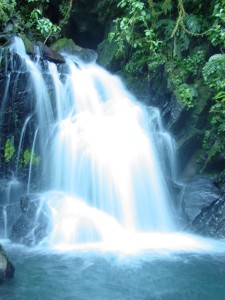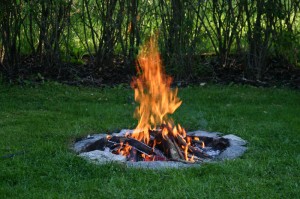How to Build a Wilderness Survival Kit
If you’re headed out into the wilderness, then you need to know that you can survive if disaster strikes. For any wilderness trip, always remember to bring a good knife. For communications, rent satellite phones so that you can call rescuers. In addition, consider some of these items for your homemade survival kit.
 What You’ll Need For Your Wilderness Survival Kit:
What You’ll Need For Your Wilderness Survival Kit:
Water Purification
Water in the wilderness may look crystal clear, but it could contain protozoa, bacteria and viruses. Try these solutions for water purification:
- Filters. Purchase a filter at a retail store that is labeled to remove Giardia, or cysts. Outdoors, you can take a strip of birch bark and roll it into a cone. Fill the cone with layers of sand, charcoal, gravel and grass and pour your water through the cone.
- Hand-held UV water purifier. If your water is full of sediments, then allow the water to sit so that the sediments can settle to the bottom before you treat it.
- Boiling. Make sure to bring a metal container with you in your backpack. Bring water to a boil for five to 10 minutes.
- Iodine tablets or drops. Mix the iodine tablets or drops into your water and let them completely dissolve. Give the iodine at least 30 minutes to work before you drink the water.
Food Procurement
For emergencies, bring energy bars or drink mix packets that contain extra vitamins. Also, carry some fishhooks and fishing line so that you can catch some fish on the go. You should also consider bringing a book that will help you to identify edible plants.
If you’re out of options, try making a split-tip gig. Cut down a green sapling about 1 inch in diameter and trim off the top branches. Cut the fat end of the sapling into four sections by using your knife or a sharp rock. Cut some sections from the branches that you removed earlier and push the sticks down into the cuts to stabilize the sections. Then, use your knife or rock to sharpen the sections, creating a four-pronged spear for either fishing or catching small animals.
First Aid
Take the time to look through a purchased first-aid kit before leaving on your trip so that you know what’s in the kit and where to find supplies. To make your own kit, include the following items:
- Antihistamine (for life-threatening allergies to things like bee stings and nuts)
- Ibuprofen
- Bandana (to create splints)
- Flexible elastic bandages
- Band-aids
- Moleskin or duct tape (to cover blisters)
- Closure strips for wounds
- Antiseptic wipes
- Antibiotic ointment
- Safety pins
- First-aid booklet
 Fire Starting
Fire Starting
For fire starting, bring multiple lightweight options. For example, bring both a lighter and a box of waterproof matches. Also, bring tinder for quickly starting fires. Survivalist Dan Corcoran recommends coating cotton balls with petroleum jelly and placing them in a 35-millimeter film canister. When you’re ready to start your fire, pull open the cotton balls to expose the dry center, and use your fire starting option to light them up.
Signaling
Bring the following items to signal for help in case you get lost:
- Whistle. Blowing a whistle requires much less energy than shouting.
- Flashlight. You need a flashlight anyway, and it can be used to attract attention.
- Flags. Tie bright orange strips to trees to leave a trail that will let rescuers know where you are. Bring a permanent marker and write your name on the strips to increase your chances of being found.
- Signal mirror. Purchase a mirror with high-quality glass, and put it in a sturdy case.
Shelter
You can easily construct a shelter out of natural materials. Build your shelter near large quantities of building materials like sticks, leaves and grass. Also, build it away from falling rocks, pooling water or insect nests.
Lean a ridgepole about eight feet long against a stump or boulder. Next, lean branches vertically against the pole. Take smaller sticks and weave them around the vertical branches to create a lattice-like structure. Then cover your lattice with leaves or other debris. Additionally, place a pile of insulating debris inside the shelter so that you aren’t lying on the ground. You can lose up to 80 percent of your body heat if you don’t insulate the ground beneath you.
About the Author: Steve Manley is the president of Globalcom Satellite Communications (http://www.globalcomsatphone.com/), a leading distributor of satellite phones for both purchase and rental.
Edited By: CampTrip.com





Discussion
No responses to "How to Build a Wilderness Survival Kit"
There are no comments yet, add one below.
Leave a Comment